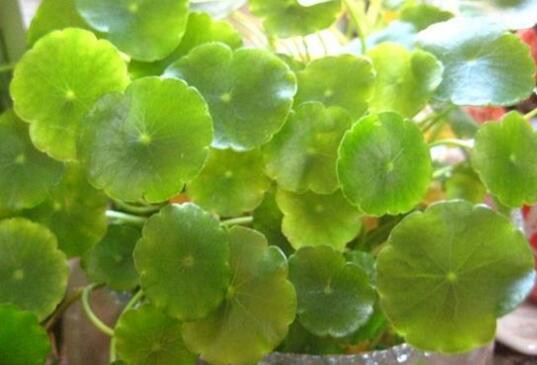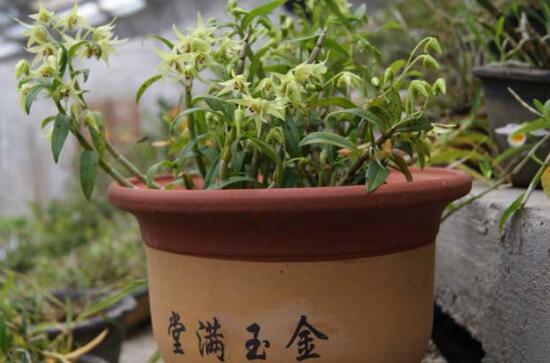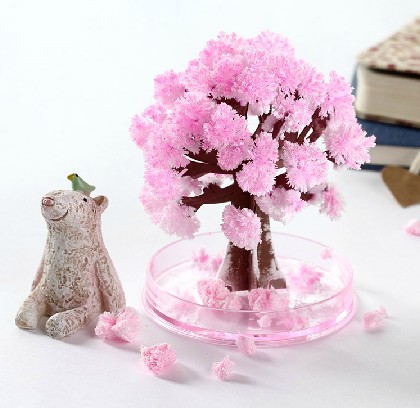How to make the leaves yellow? four tricks to make the leaves green again / details are very important.
Under normal circumstances, it is an evergreen plant all the year round, but some flower friends find that their leaves turn yellow, which not only makes the overall plant shape not good-looking, but also may affect the growth of the plant. What if the leaves turn yellow? Let's find out the specific reasons and solutions.
What if the leaves of Codonopsis pilosula turn yellow

There are two main reasons for the yellowing of leaves, namely, environmental factors and culture methods. The yellowing caused by environmental factors mainly shows that the leaves near the soil are yellowish brown and the top leaves are not glossy; improper culture methods show that the whole leaves are yellowish, both cases need to be dealt with in time.
1. Watering is impermeable
[cause of yellowing]: only half a section of water is watered each time, and the drainage hole at the bottom of the basin stops watering when there is no water flowing out. The surface of the soil is moist but the bottom is dry, resulting in insufficient water absorption from the roots, so that the leaves of Rabdosia angustifolia will turn yellow.
[solution]: watering should be thoroughly watered, and the judgment method is to see whether there is water seeping out from the drainage hole at the bottom, and if so, it means that the soil is all moist.
2. The light is too poor
[cause of yellowing]: Rabdosia angustifolia likes the semi-shaded environment, but sometimes the branches and leaves are so luxuriant that the leaves near the soil do not have enough light, so they turn yellow, while the leaves at the top are dull due to the lack of light in the plant as a whole.
[solution]: what about the yellowing of the leaves caused by poor lighting? The answer is to increase the light, but can not directly move the copper grass to the sun for management, but use scattered light for 3-4 hours a day.
3. Poor ventilation
[cause of yellowing]: Codonopsis lanceolata likes a moist and warm environment and has certain requirements for air humidity. If the ventilation is too poor, the air will be too dry and the environment will be muggy. It will become a natural phenomenon for the leaves to turn yellow and fall off.
[solution]: ensure good ventilation of the environment, enhance air fluidity, contribute to temperature control and increase humidity, and spray water to the leaf surface if the humidity is too low.
4. The temperature is too low
[cause of yellowing]: in the breeding method of Rabdosia angustifolia, we have mentioned that its cold tolerance is weak, so people often move it indoors to raise it in winter, but some flower friends move it to the outdoor sun before the temperature picks up. As a result, the leaves turn yellow because the temperature is too low.
[solution]: pay attention to the change of ambient temperature, try not to put copper grass outside for maintenance in winter, you can put it on the edge of the window to receive sunlight, but pay attention to heat preservation.
The ultimate solution
If there are more yellowing leaves, a simple and effective solution can be taken, that is, separate cultivation, detaching the plant from the basin, then separating the plant with a tool, and planting the seed plant in a new pot soil to bring the plant back to life.
What to do about the yellowing of the leaves of Rabdosia angustifolia? the efficacy and function of Rabdosia angustifolia
Tongqian grass has a strange shape, has ornamental value, but also has a lot of functions and effects, so many people will breed at home. However, the leaves of Codonopsis lanceolata will also turn yellow in the process of breeding. What should we do? Today, I will tell you the solution to the yellowing of the leaves of Rabdosia angustifolia, as well as its efficacy and function.
What if the leaves of Codonopsis pilosula turn yellow
1. Pour "half of the water", that is, the watering is not thorough, and there is no water seepage at the bottom of the basin.
two。 It is cold in winter and the roots have been frostbitten.
3. After the winter, eager to go out of the room, put in a warm place to bask in the sun, temporarily unable to adapt to the abrupt climate.
4. The basin soil has been too wet or dry for a long time and has not been watered as soon as it is dry.
5. Keep it in poor ventilation for a long time.
6. The leaf surface is not cleaned with water for a long time, and dust accumulates, which hinders photosynthesis.
7. Lack of potassium, add appropriate amount of plant nutrient solution.
The efficacy and function of Codonopsis pilosula
1. Ornamental value
Tongqian grass is a perennial water or wet herb, 5-15 cm high, small and exquisite, its submerged leaves with long handle, round shield-shaped, wavy edge, grass green. The flowers of Rabdosia angustifolia are umbels, small and white and pink. Its stem node is obvious, one node, each node has a leaf, can be extended all the time. The growth rate of the horizontal stem under Tongqian grassland is amazing, it spreads to wherever it goes, and the water quality is not strict. It can be cultivated in fresh water with low hardness. It is one of the beautiful and easy-to-grow aquatic plants and has high ornamental value.
2. Decorate the home
Copper money grass is an evergreen, chic small aquatic plant, easy to cultivate and manage, and it is also useful in home style collocation. For example, if it is used to match the Chinese style decoration style of advocating and elegant, paying attention to symmetrical beauty, then you can use oval pots engraved with blue carvings to cultivate copper money grass, and the home is more elegant. Chinese ornamental plants pay attention to "look at its leaves, appreciate its shape", copper grass has a strange shape, the leaves are like copper coins, round and lovely, symbolizing wealth and reunion, integrating the moral that Chinese people like, but the home does not lose the color of wealth.
If it is a simple and lively modern simple style, cultivate copper grass with a round transparent glass container, which not only shows freshness and beauty, but also shows personality, which adds a lot of artistic flavor to your home. If it is a return to the natural pastoral home style, not to mention, copper thread grass do not lead to green, more natural and fresh and refined. Copper grass is a good home style partner, hurry to add a pot of copper grass to your home, let your home show more style.
3. Purify the air
Rabdosia angustifolia is not strict in water quality and can be cultivated in fresh water with low hardness. Potted plants can be planted in open fields in warm areas, which are suitable for water trays, aquariums, pools, and wetlands. Indoor water bodies are green and can purify water quality. Moreover, the green leaves of Rabdosia angustifolia can purify indoor air, which is good for the indoor environment.
4. Fengshui action
According to Chinese culture, pay attention to moral meaning, homophonic, etc., copper grass, round leaves, like mini lotus leaves, quite lovely, like ancient copper coins, implying reunion, good luck, and the name is stained with the words "copper" and "money", symbolizing wealth, implying that the family has copper money and rolling wealth. Therefore, copper grass is regarded as a symbol of wealth, so, from the moral point of view, the same money is also a good feng shui. Therefore, planting copper grass in the home not only has symbolic significance, but also avoids the vulgarity of using golden copper coins to decorate. The shape of copper grass is special and expensive.
5. Medicinal value
The roots, stems and leaves of Rabdosia angustifolia can be used as vegetables, as well as traditional Chinese medicine to cure wind, solidify intestines, clear eyes and clear summer heat, etc. Tongqian herbaceous slightly cold, bitter taste, the whole grass can be used as medicine, with heat-clearing, dehumidification, detoxification, diuresis, detumescence and other effects. Copper grass can also be used for damp-heat jaundice, heatstroke, diarrhea, sand bleeding, carbuncle, sore poison, fall injury.
The above is for you to introduce the relevant knowledge about the breeding and efficacy of copper grass, hope to help you, more household knowledge, please pay attention.
How to deal with the yellowing of incense leaves? there are four ways to avoid wilting and yellowing of leaves.
The most attractive thing about touching incense is its leaves. There are fine glandular hairs on the fleshy leaves, and touching them with your fingers will also give off a stronger fragrance, but these must be if the leaves are healthy and green. If the leaves are yellowing, then the ornamental quality is much worse, but what if the leaves are yellowed? Let's take a look at the causes and solutions.
What if the incense leaves turn yellow?
1. Improper watering
There are some plants that are more water-resistant, such as coppergrass can soak and grow in water, but touch incense prefer a relatively dry environment, if watered more, it will make the roots of touch incense rot, and then cause the leaves to turn yellow. And without watering for a long time, it will also turn yellow because of lack of moisture.
Solution: adopt the watering strategy of seeing dry and wet, each watering to see the soil dry and rewatering, see the soil moist, reduce or stop watering, the method can refer to the detailed introduction of how to water touch incense.
2. Lack of light
Meet incense especially like sunny places, this is the reason why it has the characteristics of succulent plants, only when the fire with sufficient light, the leaves will be thicker and green, otherwise they will be thin and yellow.
Solution: what about the yellowing of incense leaves caused by lack of light? The answer is to increase the light. Touch incense can be maintained in the sun, but pay attention to the temperature in the middle of summer, if the temperature is too high, it should be properly shaded.
3. Closed environment
Many flower friends will touch incense indoors, and like to close the doors and windows for a long time, resulting in a closed environment and insufficient ventilation, especially in summer when the temperature is too high, it is reasonable for the leaves to turn yellow.
Solution: usually pay attention to open windows to maintain air circulation and increase the ventilation of the environment, which can not only let touch incense breathe fresh air, but also reduce the harm of diseases and insect pests, which is more beneficial to people's health.
4. Lack of nutrients
Generally speaking, it is not necessary to fertilize incense regularly, but some flower friends do not apply fertilizer once in 1-2 years, which will lead to a serious lack of nitrogen and phosphorus in the soil, especially the components of chlorophyll. As a result, the leaves yellowed and fell.
Solution: not enough nutrients appear to touch incense leaves yellow how to do? Change the soil in time, and then fertilize 1-2 times a month, the fertilizer is mainly liquid fertilizer, commonly used compound fertilizer can provide nitrogen, phosphorus, potassium and other elements, do not appear the phenomenon of long-term non-fertilization.
- Prev

Dendrobium leaves yellowing how to do, summer shade to reduce watering / adjust the temperature to change the basin soil
As a kind of ornamental, medicinal and edible plant, Dendrobium is an ideal pot plant in the minds of many people. In daily life, there are many people who raise Dendrobium, but it is not easy to raise. So in the process of breeding, many flower lovers often encounter a problem, that is, the leaves turn yellow, what about the yellow leaves of Dendrobium?
- Next

Pot culture management methods and pest control techniques of cherry blossoms
Cherry blossoms can be potted. Cherry blossoms are suitable to be planted in most areas of our country, rarely potted, and suitable for potted cherry varieties such as rising sun, Fuji Sakura (Fuji Sakura) turmeric, imperial clothing yellow and so on. Potted cherry blossoms can blossom and blossom with the following measures. Soil potted cherry blossoms should first prepare the soil.
Related
- Fuxing push coffee new agricultural production and marketing class: lack of small-scale processing plants
- Jujube rice field leisure farm deep ploughing Yilan for five years to create a space for organic food and play
- Nongyu Farm-A trial of organic papaya for brave women with advanced technology
- Four points for attention in the prevention and control of diseases and insect pests of edible fungi
- How to add nutrient solution to Edible Fungi
- Is there any good way to control edible fungus mites?
- Open Inoculation Technology of Edible Fungi
- Is there any clever way to use fertilizer for edible fungus in winter?
- What agents are used to kill the pathogens of edible fungi in the mushroom shed?
- Rapid drying of Edible Fungi

